Brian Meert's Blog, page 113
July 11, 2018
New Requirements for Facebook Custom Audience Targeting, a Timeline
 July 11, 2018
July 11, 2018Anna Hubbel

If you haven’t already noticed, Facebook has put into effect new requirements for Custom Audience as part of its effort to improve transparency and accountability. Custom Audience is a targeting option that allows you to upload a file containing customer information you’ve gathered from sign-ups and contact forms. The new requirements make it clearer to Facebook users how you’ve obtained that information.
July 2
Facebook requires all advertisers, whether an individual or a Facebook advertising company, to indicate precisely where their customer information originally came from. Whenever you upload a new audience, you must provide that information. There are three possibilities of data origin. Facebook will ask you to select the one that applies to you.
Directly from customers-You collected the information directly from your customers.
Customers and partners-You collected the information directly from your customers and sourced the information from your partners (i.e. agencies).
Directly from partners-You sourced the information directly from your partners (i.e. agencies or data providers).
Users will see the data origin information in the drop-down menu of your ad under the “Why am I seeing this?” section. They will also see whether you are able to contact them through phone number or email address.
July 2
Facebook mandates that you establish an audience-sharing relationship through Business Manager when sharing a Custom Audience file with an advertising agency or other entity. Both you and the entity you are sharing with must also agree to Facebook’s Custom Audience Terms.
Last, although your responsibility to have the necessary permission to use and share data remains the same, you will now be regularly reminded of that responsibility. You’ll receive detailed reminders about the importance of protecting users’ privacy before you run an ad. Also, everyone on an ad account, rather than just the admin, will be required to accept Facebook’s terms.
These new requirements allow you to continue using Custom Audiences while also making the ad experience better and more transparent for Facebook users.
The post New Requirements for Facebook Custom Audience Targeting, a Timeline appeared first on AdvertiseMint.
July 10, 2018
Brands Are Now Testing AR Ads in Facebook News Feed
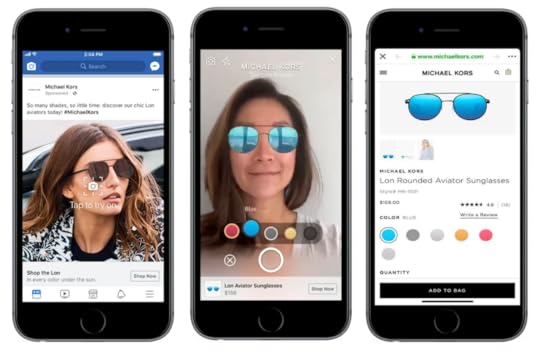 July 10, 2018
July 10, 2018Anna Hubbel
Brands Are Now Testing AR Ads in Facebook News Feed. #facebookads #facebookadvertising #augmentedreality
Click To Tweet

Augmented reality ads are going to appear in News Feed. According to Tech Crunch, Facebook is testing AR ads that allow shoppers to virtually try products. If the testing goes well, this new advertising capability will revolutionize the Facebook shopping experience.
Facebook’s vice president of product marketing for global marketing solutions, Ty Ahmad-Taylor announced the test of AR ads in News Feed at a New York City event on Tuesday.
Back in May, Facebook announced at its F8 conference its plans to use AR to market products in Messenger. With AR ads in News Feed, advertisers will be able to offer virtual experiences to shoppers as they scroll and browse. It will be like shopping at the mall, where customers can socialize with friends while also checking out a store or two and trying things on.
The AR ads will appear as regular News Feed ads, but they will have a “Tap to try it on” capability, says Tech Crunch. When the shopper taps this option, they can “try on” the product and decide if they like what they see. If so, they can make the purchase. If not, they may choose to move on to the next AR experience.
A few brands are trying News Feed AR ads, including Michael Kors, Sephora, and NYX Professional Makeup.
Other announcements made at the event include the following:
A new Video Creation Kit-Advertisers will be able to use existing images in mobile video templates to easily create ads.
More support for shopping in Instagram Stories-Shopping tags will be available to all brands that use this feature in time for the holidays.
Instagram’s Collection Ad format-This feature will now be available to all advertisers.
The post Brands Are Now Testing AR Ads in Facebook News Feed appeared first on AdvertiseMint.
How to Create a Spotify Ad
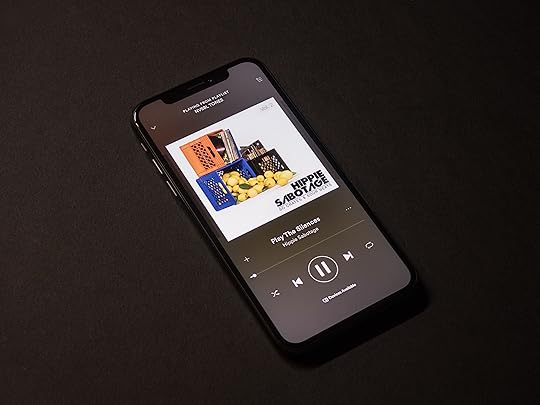 July 10, 2018
July 10, 2018Anna Hubbel
How to Create a Spotify Ad. #spotify #spotifyads #audioads
Click To Tweet
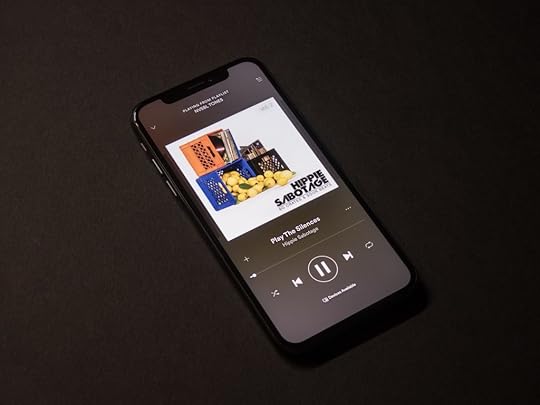
Although most of us use visual creatives for advertising, which a Facebook advertising company does, there’s another option we should (but don’t often) try: audio ads. Just as effective, audio ads are especially impactful when they’re delivered through a popular digital music service like Spotify. Spotify gives music lovers access to millions of songs. Since people listen to music on Spotify on a daily basis, you can create audio ads that will play intermittently between songs. Fifteen or 30 seconds in length, these ads play naturally during a transition from one song to the next.
Why Advertise on Spotify?
People across the globe listen to Spotify. The platform allows them to listen to their favorite tunes wherever, whenever. Spotify boasts 90 million listeners, over two hours of daily streaming, and 24 percent lift in ad recall for audio ads. In addition to having access to such an expansive audience, Spotify advertising offers the following benefits:
Increased efficiency-You can plan, buy, and manage audio ad campaigns in a matter of minutes directly in the platform.
Budget flexibility-Run campaigns of any sized budget.
Free audio ad creation tool-When you don’t have pre-produced audio assets, you can use the platform to create audio ads for free.
How to Create a Spotify Ad
Spotify Ad Studio is the self-serve platform you can use to create audio ads for Spotify. You can either upload your own audio or write a script for which Spotify will provide a voiceover actor. Ad Studio also offers targeting settings that make sure your message is delivered to the most relevant audience at the right moment.
Step 1: Choose your objective and name your ad.

Step 2: Define your audience.

Step 3: Specify your budget and start and end dates.
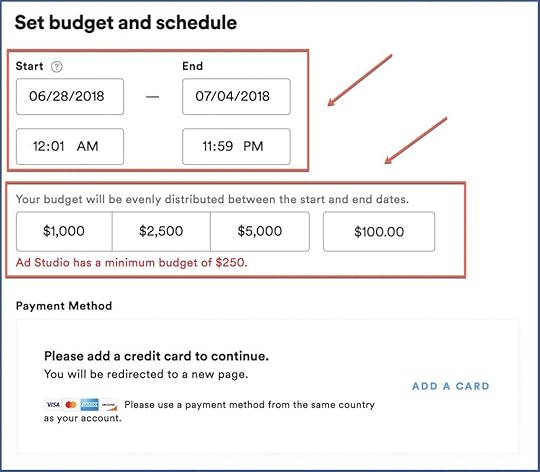
Step 4: Create your ad. You can either upload audio you’ve already created with the “Upload Audio” option or a script you’ve written with the “Request Voiceover” option, which Spotify will give to a voiceover actor to read for you.

Step 5: Upload an image to display on listeners’ screens while your ad plays. Also, enter a headline for your ad and a companion link, which will direct users to where you want them to go after clicking the ad.
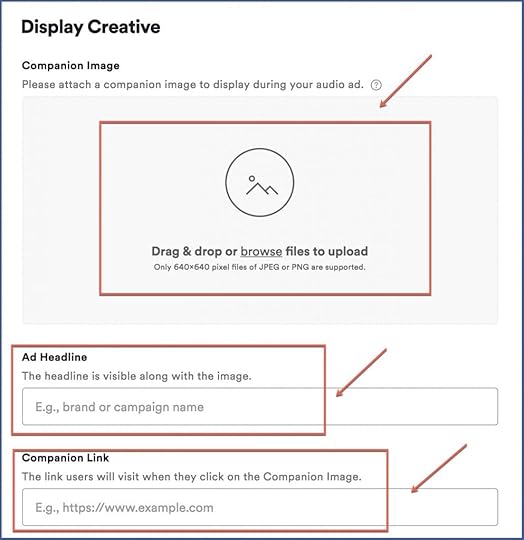
In no time at all, you have your audio ad. It takes only a matter of minutes to reach a worldwide audience. So if strictly visual ads aren’t cutting it for your campaign, try shifting gears and appealing to people’s sense of hearing. They’re already on Spotify to listen. Let them listen to what you have to say.
The post How to Create a Spotify Ad appeared first on AdvertiseMint.
July 9, 2018
A List of Instagram Stories Tricks You Need to Learn
 July 9, 2018
July 9, 2018Anna Hubbel
A List of Instagram Stories Tricks You Need to Learn. #instagram #instagramhacks #socialmedia
Click To Tweet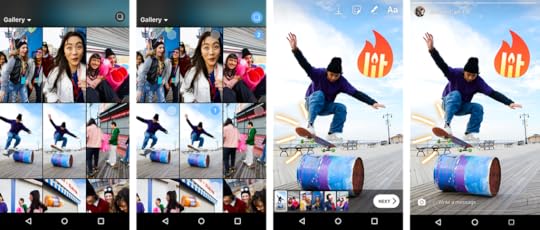 Photo Courtesy of Instagram
Photo Courtesy of Instagram
“How’d they do that?!” If you find yourself asking this question about other users’ Instagram Stories, you’re not alone. A lot of us are still learning about all the latest features Instagram rolls out before we’ve even mastered the existing ones.
But don’t beat yourself up about it. Many features are not obvious. In fact it takes some exploring to find. To save you the time, here are 13 Instagram Stories tricks that you probably didn’t know about.
Trick #1: Add Even More Colors
If you own a brand, you likely have a specific color scheme you want customers to associate with your brand. If you don’t see your brand’s color scheme in Instagram’s color presets, never fear. There’s a trick for accessing every possible color.
Step 1: When editing your Story, at the upper-right corner of your screen, tap the pen icon or the “Aa” icon to open the brush or text tool.
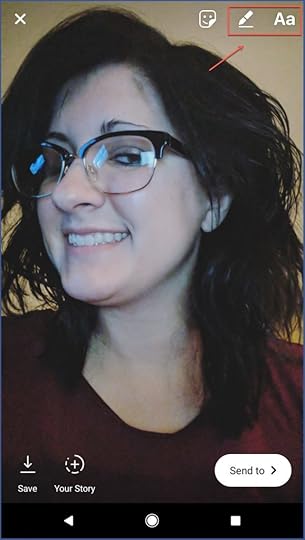
Step 2: At the bottom of the screen, tap and long-hold one of the default color options to open the color slider. Select a custom color by swiping across the color slider.
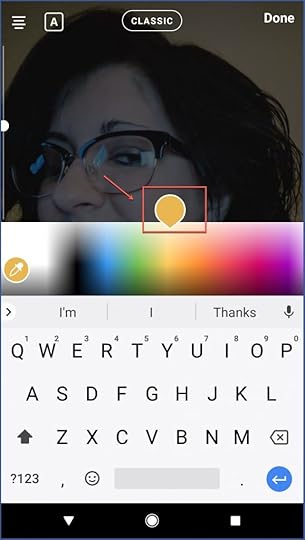
Trick #2: Create a Drop Shadow Effect on Text
Text doesn’t have to look flat. Add some dimension by creating a drop shadow effect.
Step 1: Type out your message after tapping the “Aa” icon.

Step 2: Tap the “Aa” icon a second time. Type the exact same message but with a different color.
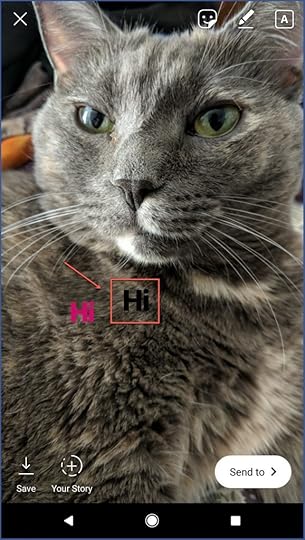
Step 3: Place the top layer of text slightly off-center from the bottom layer of text until it creates a drop shadow effect.
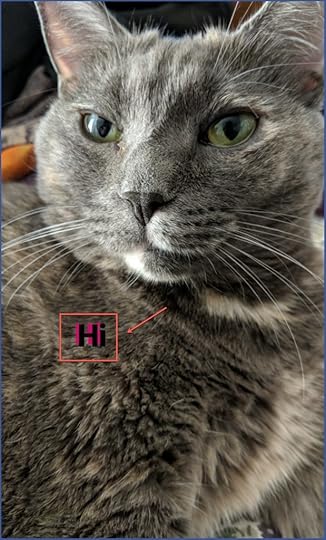
Trick #3: Record “Hands-Free”
Holding the record button when making a Story can be limiting. That’s why earlier this year, Instagram introduced a video feature that allows you to press the record button and let go. With this feature, you can easily switch between your front and rear camera without stopping recording.
Step 1: Open your Instagram Stories camera. At the bottom of the screen, swipe through the effect options (Live, Normal, Boomerang, Hands-Free). Choose the Hands-Free option.
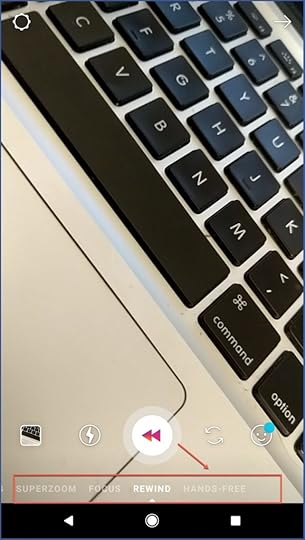
Step 2: Begin recording by tapping the record button at the bottom of the screen. Record until the maximum video recording time runs out or tap the recording circle.
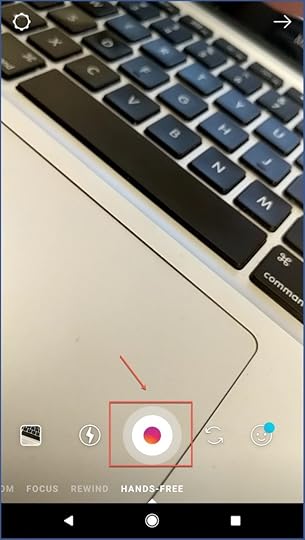
Trick #4: Create a Solid Background Color
If you want to get really creative without using photo or video in your Stories, you can create a solid background color. You can then share your message as text or drawings.
Step 1: Select a color by tapping the pen icon in the top-right corner of the screen.
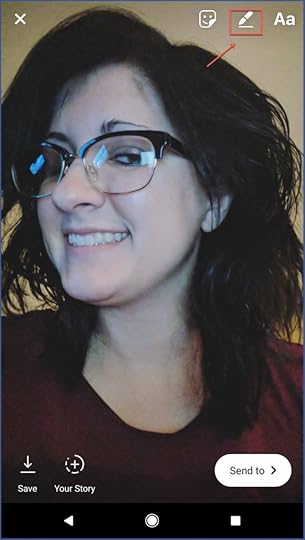
Step 2: Tap and hold on the screen for one to three seconds. The screen will fill with your chosen solid color.
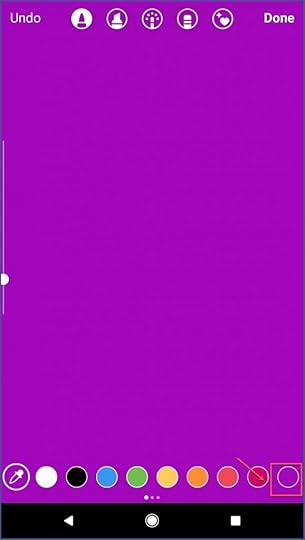
Trick #5: Create a Selfie Sticker
Ever heard of a selfie sticker? This fun feature allows you to make a sticker out of a selfie. You can then use the sticker in your Stories.
Step 1: At the top of your screen, tap the sticker button. Select the camera option.
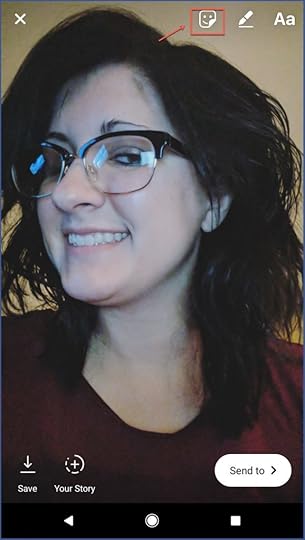
Step 2: Take a selfie (pose as desired).
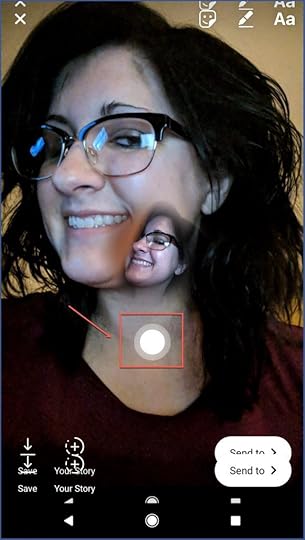
Step 3: Position the selfie sticker on the screen as desired. You can create a circular border around the sticker by tapping it. To remove the border, tap the sticker again.

Trick #6: Use One Finger to Zoom In and Out
Instead of pinch-zooming, you can zoom in and out in an Instagram Story with just one finger. It’s a lot easier this way because pinch-zooming can be sensitive or inaccurate.
Step 1: Open the Instagram Stories camera. Begin recording your video by holding the capture button. Slide up or down to zoom in or out.
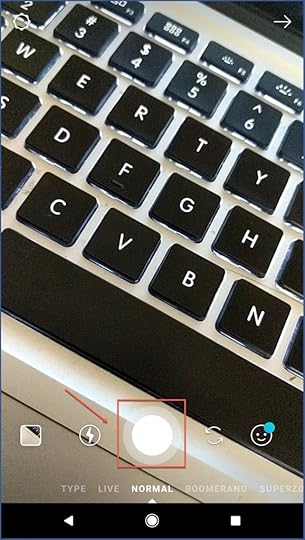
Trick #7: Mention Other Accounts
Boost your Instagram connections by mentioning other accounts in your Story, whether it be other businesses or influencers you work with. Every time you mention someone, they will receive a notification of the tag and a direct message with the preview of your Story.
Step 1: Select the “Aa” icon to add text.
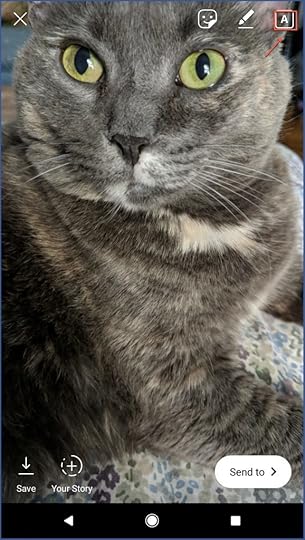
Step 2: Type the @ symbol and the account username. A pop-up menu will appear. Select the account you want to mention.
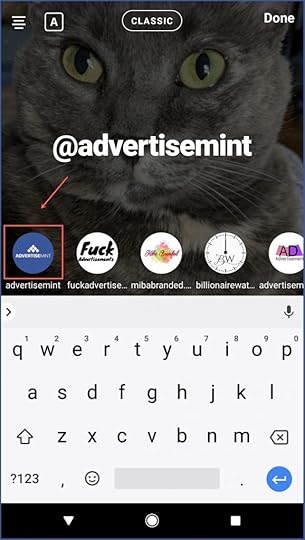
Trick #8: Upload Stories Older Than 24 Hours
Yes, there’s a way to upload a Story when you don’t have the time to do so right away.
Step 1: Take a photo or video from your phone’s camera outside of the Instagram app. Go to Stories and click the camera roll icon.

Step 2: Choose a photo or video from your gallery and upload.
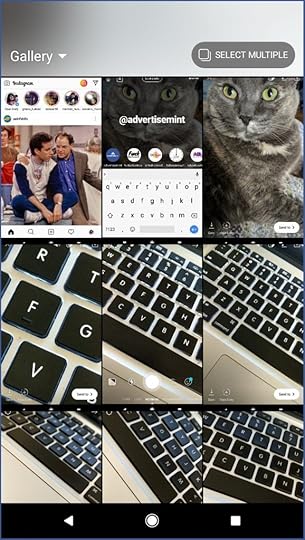
Trick #9: Hide Your Stories from Specific Users
Every now and then, you want to share a Story, but you’re worried about a specific user seeing it. Guess what? You can hide it from them!
Step 1: Go to your Instagram profile and select the gear icon (on iOS) or the ellipsis icon (on Android) to open your settings.
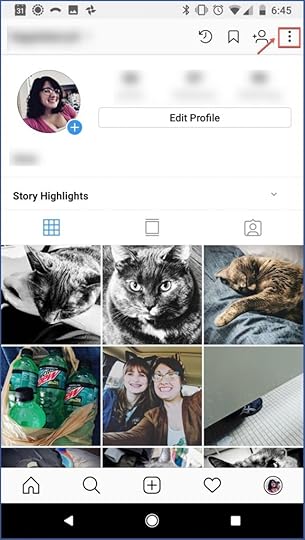
Step 2: Select “Story Controls” located under “Privacy and Security.”
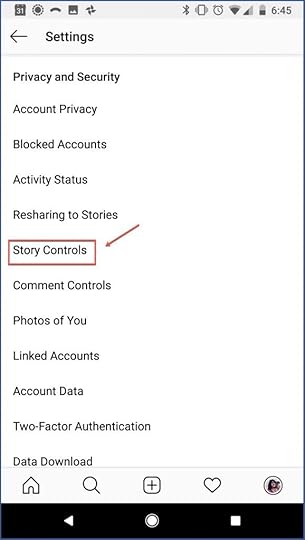
Step 3: Choose the “Hide My Story From” option.

Step 4: Choose the users from which to hide your Story. Tap “Done” and you’re done!

Trick #10: Hide Other Users’ Stories
Tired of watching Stories you don’t care about? Instagram’s got your back. Hide the Stories by other users when they start to clog up your feed.
Step 1: Load your Instagram feed. Go to where the Instagram Stories are.
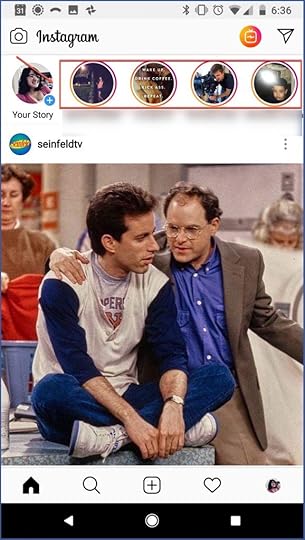
Step 2: With your finger, press down on the picture of the user whose Stories you want to hide. Select “Mute” from the menu that appears.

Trick #11: Download Your Stories to Camera Roll
Although part of what makes Instagram Stories unique is their lifespan of just 24 hours, there are some moments you just want to hold on to forever. Instagram is generous and makes it possible to download Stories to your camera roll.
Step 1: Open the Story you want to save and swipe up. In the menu bar below your Story, tap the arrow icon that’s pointed down. And you’re done!
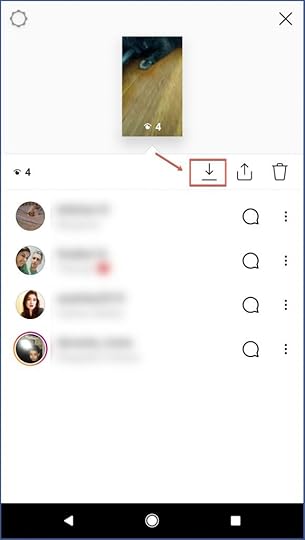
Now hurry up and master these tricks before Instagram starts rolling out even more awesome features to learn!
The post A List of Instagram Stories Tricks You Need to Learn appeared first on AdvertiseMint.
July 8, 2018
Does Facebook Advertising Work?
 July 9, 2018
July 9, 2018Anna Hubbel
Does Facebook Advertising Work? #digitaladvertising #facebookads #business
Click To Tweet

The sad truth we’re all burdened with is marketing costs money. That’s why we’re so careful about how we advertise. We want to be sure it’ll work before we invest both our budget and our time.
It’s understandable that you’re skeptical about Facebook advertising (if you are). There are a lot of components to it that can make or break your campaign. But when you know about all these components, as well as the best practices to employ, the results can be all you had hoped for and then some.
Looking at the success stories of other businesses is the best way to know whether including Facebook in your advertising strategy works. Not only do these stories offer reassurance, but they also provide inspiration.
Many Businesses Find Success in Facebook Advertising
The numbers don’t lie. Numerous businesses have boasted their success after using Facebook advertising. Both big and small businesses alike are seeing positive results from their campaigns.
MailChimp
MailChimp, a leading email marketing platform, used video ads across Facebook and Instagram to boost and measure awareness for its automated email marketing and integration services. With fun creative in which a woman listens to a giant brain, the campaign had a simple message: “Remind shoppers they left things in their carts, automatically.”
The company targeted US men and women in the 18 to 64 age range. The company also used a Lookalike Audience, which it created from an existing customer list (called a Custom Audience), to target people similar to MailChimp’s current customers.
Here are the results of the campaign:
An 18-point lift in ad recall
A 10-point lift in brand awareness
A 26-point lift in association of MailChimp with marketing automation
FabFitFun
Another company that found success in Facebook advertising is FabFitFun, a women’s lifestyle brand that sells subscription boxes filled with products pertaining to beauty, health, and fashion. FabFitFun used Facebook Marketplace to expand its customer base. The company used photo, video, and Carousel ad formats to reach US women in the 25 to 44 age range. The ads offered promotional codes for its Spring Editor’s Box, including a “Shop Now” call-to-action.
The results were impressive:
A 2.2X return on ad spend
16 percent lower cost per acquisition than goal
Olivers Apparel
If you need more reassurance, here’s another company whose ad campaigns flourished on Facebook. Olivers Apparel, a men’s athletic wear company, used video and Facebook’s conversion ad objective to reach new customers. Targeting men in the 18 to 54 age range, Olivers promoted its athleisure apparel in a series of videos that delivered the brand and primary message within the first three seconds. The ads also contained a “Shop Now” call-to-action.
Take a look at the results:
A 2.1X return on ad spend
A number one sales month in March 2018
Facebook Advertising Best Practices
Of course, to succeed in Facebook advertising, you must implement a few best practices. These practices may vary from business to business or goal to goal, but there are several you should always implement.
A/B test–Test different creative or ad elements to see which perform better for your campaign. For example, you can take two versions of the same ad then use different images or text in each. You might find that the slightest difference helps an ad perform better in one version than another. The best way to find out is to A/B test.
Ad refresh-Duplicate a top-performing ad and refresh it with a new image or add a slight change so users don’t get bored with the same ad. When you find an element that works, don’t let it get stale by keeping the ad the same and redelivering it over and over. Keep the overall message and the best performing elements, but make a small alteration (e.g. different image) to keep things fresh.
Turn off underperforming ads-If an ad isn’t working, hit the brakes. It’s only hurting your campaign if it isn’t delivering desired results. If you keep an underperforming ad running, you’re wasting your resources. Users won’t care to look at anything else you put out there going forward.
Use Facebook’s audience targeting options-Location, demographics, Custom Audiences, and Lookalike Audiences are a few options for ensuring your ads reach the right audience. If your ad isn’t reaching the audience most likely to buy your product or service, what’s the point? This best practice is essential if you’re going to have any success with your Facebook campaign.
Be familiar with various ad formats-There are a lot of formats to experiment with, such as video, Canvas Ads, Carousel Ads, and Dynamic Product Ads. Some audiences respond better to certain formats. For example, a Millennial audience may respond better to short, fast-paced videos than an older audience, who may prefer to browse through products at a leisurely pace in a Carousel format. The format may depend on the detailed specifics of your targeted audience. It helps to experiment.
Run best performing ads-When your A/B tests reveal ads with optimal performance, continue running them. Don’t settle for ads that are mediocre. Only put out the best because that’s what your campaign deserves. It’s worth the extra time and effort. Your audience will associate your ads with great quality.
Is Facebook Advertising Right for You?
Now you may be thinking, Well, just because it worked for all of those other guys doesn’t mean it will work for me. And you’d be right. Because every Facebook advertising success story is unique. But it’s up to you whether it’s time to discover what yours will be.
The post Does Facebook Advertising Work? appeared first on AdvertiseMint.
July 6, 2018
Facebook Launches Codeless Events Setup for Apps
 July 6, 2018
July 6, 2018Bret Wallace
Facebook Launches Codeless Events Setup for Apps. #facebookads #facebookadvertising #news
Click To Tweet
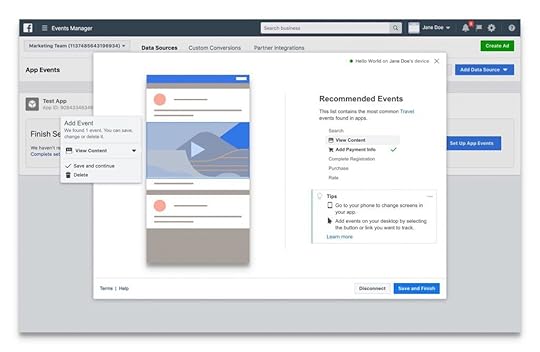
In a move that one user called “truly game changing,” Facebook launched Codeless Events Setup for Apps that allows you to create events on your apps without involving programmers.
Facebook announced the enhancement to its app creation service at the F8 Developers Conference in May and launched the program in late June, according to the Facebook for Business page.
You will gain new control over your company’s mobile app and will have immediate results on how your customers are interacting with your app.
The latest version of Facebook SDK (v4.34.0) includes a Marketing Kit that allows you to add, update and remove events with a click-and-point tool, no technical skills needed. You no longer need to wait for months for your programmers to code the additional information, relaunch the app, and wait again until customers upgrade the app.
In minutes, you can place the new event directly into the app and see the results in real time about how your app users are interacting with the change.
“Our developers no longer need to waste time getting trained in marketing terminology, and a single marketer can make changes in minutes and do their job seamlessly. … This is truly game changing,” said K. Opal, marketing manager of TrueID, an early tester of the service
The reporting features of the service will also allow you to react quickly to the effectiveness of campaigns, tweaking and adjusting events to ensure users are staying engaged, and even re-engaging lapsed users. And with developers not wasting time on coding for marketing functions, they can focus on new features that will entice users to stay involved with your mobile app.
To get started with Codeless Events Setup for Apps, you need to download the latest version of Facebook SDK and make sure it is integrated with the new Marketing Kit.
With app usage now surpassing more than half the time individuals spend on digital media, if your app is not attracting and keeping customers, you are falling behind the competition. Facebook has just offered a new tool to keep your app relevant and effective.
The post Facebook Launches Codeless Events Setup for Apps appeared first on AdvertiseMint.
Google AdWords Rebranded as Google Ads
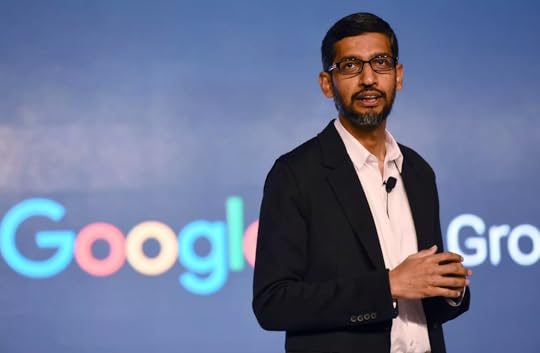 July 6, 2018
July 6, 2018Anna Hubbel
Google AdWords Rebranded as Google Ads. #googleads #googleadwords #news
Click To Tweet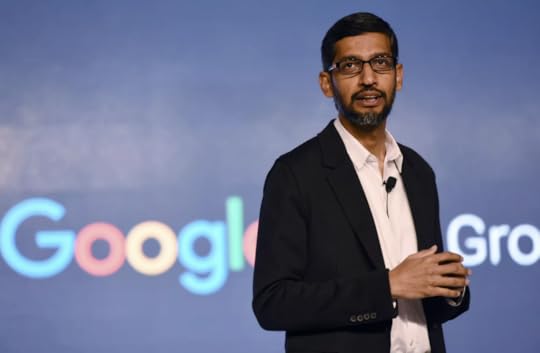 Photo courtesy of Recode.com
Photo courtesy of Recode.com
Even Google needs a makeover now and then. Google recently announced that it has rebranded its ad products. Google AdWords will now be known as Google Ads. This rebrand includes all of the same advertising capabilities as Google AdWords, such as Search ads, Display ads, Video, Apps, Google Maps placements, Google Play placements, and more. Google is also adding a new campaign type for small businesses that makes it easier to get started. Expect the new Google Ads to go live after July 24, 2018.
To top it off, Google also announced new brands and solutions for two other advertising products: Google Marketing Platform and Google Ad Manager.
Google Marketing Platform
This platform for marketing team collaborations combines Google’s DoubleClick advertising products with Google Analytics 360 Suite. Google says this juxtaposition of products makes it possible for marketers to manage digital media and customer experiences all in one location.
“We’ve heard from marketers that there are real benefits to using ads and analytics technology together, including a better understanding of customers and better business results,” Google’s Senior Vice President of Ad & Commerce Sridhar Ramaswamy said in the official rebrand announcement. “Google Marketing Platform helps marketers achieve their goals by building on existing integrations between the Google Analytics 360 Suite and DoubleClick Digital Marketing.”
As part of the Google Marketing Platform, Google also announced Display & Video 360, a product that includes features from DoubleClick Bid Manager, Campaign Manager, Studio, and Audience Center. This new all-inclusive product is intended to make it easier for teams to work together when making ad campaigns.
Google Ad Manager
Google Ad Manager brings together the capabilities of DoubleClick for Publishers and DoubleClick Ad Exchange. Google says it has been working on making this product for the last three years to make ads management overall more simple and efficient for marketers.
“We recognize that the way publishers monetize their content has changed,” said Ramaswamy. “With people accessing content on multiple screens, and with advertisers’ growing demand for programmatic access, publishers need to be able to manage their businesses more simply and efficiently.”
Once active, the new Google Ads brand will span across the product interface, Help Center, billing documents, and more. It’s also important to note that the URL for account access will change from adwords.google.com to ads.google.com.
While these changes are meant to make digital advertising easier for marketers, it’s Google’s ultimate goal to ensure that people have good experiences. Ad transparency and trust are essential to creating those experiences, which Google recognized by launching its new Ad Settings and expanding Why this Ad?. And in January, Google released a new feature that allows users to mute ads for 90 days.
“As always, our commitment is to ensure that all of our products and platforms set the industry’s highest standard in giving people transparency and choice in the ads they see,” said Ramaswamy.
To prepare for the new Google Ads brand, advertisers are asked to review Google’s new visual guidelines.
The post Google AdWords Rebranded as Google Ads appeared first on AdvertiseMint.
July 5, 2018
Facebook Announces API Restrictions for Privacy Protection
 July 5, 2018
July 5, 2018Anna Hubbel
Facebook Announces API Restrictions for Privacy Protection. #apps #facebookfordevelopers #facebook
Click To Tweet
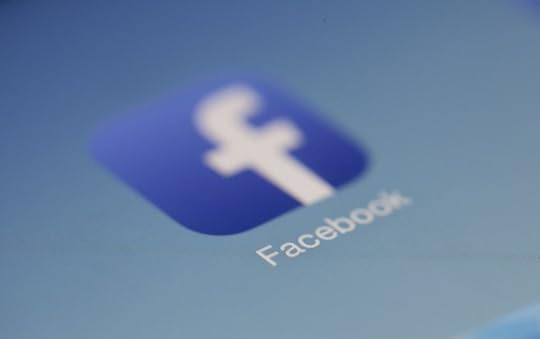
Through an information gathering app, Cambridge Analytica harvested personal details from over 80 million Facebook users. To improve the relationship between users and app developers, Facebook has been investigating all the possible ways to protect users’ personal information. Vice President of Product Partnerships Ime Archibong explained several new API restrictions Facebook is implementing to instill safer and more secure experiences for users when they use apps connected to the platform.
The new restrictions apply to six specific API products:
Graph API Explorer
Profile Expression Kit
Media Solutions
Pages API
Marketing API
Lead Ads Retrieval and Live Video APIs
Some restrictions involve a change in process or access while others involve the elimination of certain product offerings altogether. All changes were made to improve the user experience while also allowing developers to continue their working relationship with Facebook.
Graph API Explorer
Going forward, developers are still able to use the Graph API Explorer App to run test queries, but they must use their own apps’ access tokens to do so.
Profile Expression Kit
Approved developers currently can use the Profile Expression Kit to allow users to share any photos or videos created within the app on Facebook. For example, users could take a photo made in the app and use it as their Facebook profile picture. Since this feature hasn’t been used much, Facebook says it’s removing it come October 1.
Media Solutions
Media Solutions, a family of APIs for developers to use in constructing tools for Facebook’s media partners, will see three major changes. First, public content discovery APIs will be restricted to page content and public posts on profiles that have been verified. Second, developers will now no longer be able to use the Trending API, the Signal tool, Trending Topics, and Hashtag Voting for interactive TV experiences. And finally, Facebook will remove Topic Search, Topic Insights and Topic Feed, and Public Figure APIs on August 1 in response to minimal usage of these products.
Pages API
If developers receive feature permissions to Page Public Content Access after going through the app review process, they’ll once again be able to use the Pages API to search for Facebook pages. With this capability, developers can find similar pages, mention other pages in posts and comments, and tag pages in Facebook ads.
Marketing API
From now on, in order to use the Marketing API, which allows businesses to automate and scale their ads and easily manage their campaigns, developers must go through an app review. Additionally, Facebook has simplified the API’s structure to make it two-tier instead of three.
Lead Ads Retrieval and Live Video APIs
Facebook announced new app review permissions for its Lead Ads Retrieval and Live Video APIs. The latter allows apps to post live videos to pages, groups, and users’ timelines. This restriction means users will be asked to review and grant (or deny) new permissions before accessing an app through Facebook.
Developers will need to abide by these new restrictions to continue offering apps through Facebook.
Facebook isn’t alone in its changes to API. Twitter announced new API rules to prevent platform misuse back in March.
The post Facebook Announces API Restrictions for Privacy Protection appeared first on AdvertiseMint.
3 Instagram Features You Need to Try
 July 5, 2018
July 5, 2018Anna Hubbel
 Instagram’s new categories feature
Instagram’s new categories featureAmidst the turmoil of Facebook privacy scandals, Instagram emerges as a saving grace. In addition to recently announcing its milestone of 1 billion monthly active users and introducing IGTV, Instagram also just rolled out three new features first previewed at the Facebook F8 Conference back in May. The three features—video chat, topic channels, and more camera effects—enhance the already-popular app and give you some exciting new toys to play with.
Video Chat
 The video chat icon is located on the upper-right corner.
The video chat icon is located on the upper-right corner.You can now set up a video chat with another user or a group in Instagram Direct. For a group, you can video chat with up to four people.
To access the video chat, go to Direct, click on a conversation, and click the camera icon on the top right corner. You can even minimize the chat window during a session so you can browse your feed, engage with other users’ posts, and even share Stories while video chatting with someone without interruption.
When an active video chat is occuring, the camera icon will turn blue. You can click the blue camera icon to join a group chat (the camera icon will turn red when you join) and click it again to leave.
You can also block and mute users. When you block them, they are unable to video chat with you. When you mute them, you will not receive video chat notifications from them. You can manage notifications by tapping your profile’s gear icon and going to “Push Notifications.”
Topic Channels
 Instagram’s new categories feature
Instagram’s new categories featureThe topic channels feature organizes your Discover content according to categories. For example, if you click on the category “Fashion” your Discover feed will show content related to fashion. Previously, Discover was cluttered with posts related to random categories that may or may not be interesting to you. Now, your Discover experience will be a more organized and efficient experience according to what you want to see.
Topic channels will adapt according to what your activity indicates you like. The feature contains a mix of posts personalized for your interests. If Instagram knows you’re interested in animals, fashion, and food, your Discover feed will contain content about animals, fashion, and food.
Camera Effects
Have some fun with Instagram’s new camera effects by Ariana Grande, Baby Ariel, Liza Koshy, Buzzfeed, and the NBA. These effects only appear to those who follow those accounts. However, if you don’t follow them, you can still use the effect if you tap on the “try it” button of the post of the person who’s using the effect.
 This filter is by Baby Ariel.
This filter is by Baby Ariel.The Ariana Grande effect layers your face on top of each other in a retro style that you can find in her new music video “No Tears Left to Cry.” The Buzzfeed effect adds the text layer “Oh yes!” from its series Worth It. The Baby Ariel filter adds a star-shaped light layers on the image along with soft colors. Liza Koshy effects add a funny looking mustache and large eyebrows to your face.
It’s no surprise that parent company Facebook highlights Instagram during its time of instability. Not only has Instagram withstood the negative headlines about Facebook and user privacy, but it also continues to be popular among younger users, a demographic Facebook is struggling to attract. For those of us who love Instagram, we get to enjoy the fun features the platform rolls out to maintain its popularity.
The post 3 Instagram Features You Need to Try appeared first on AdvertiseMint.
July 3, 2018
Facebook Says Weapon Accessory Ads Must Only Target Audiences 18+
 July 3, 2018
July 3, 2018Anna Hubbel
Facebook Says Weapon Accessory Ads Must Only Target Audiences 18+. #facebookads #facebookadvertising #guns
Click To Tweet

Advertising weapon accessories on Facebook is a sensitive topic for some. To ensure the platform remains a safe space for children and teens between the ages 13 and 18, Facebook recently enacted a new age restriction to its advertising policy for weapon accessory ads. Advertisers delivering such ads must now only target audiences 18 and older. The network introduced the new restriction in a Facebook Business article.
“Unlike posts from friends or pages, ads receive paid distribution,” Facebook says in the article. “This means we have an even higher standard for what is allowed and why we have chosen to limit weapons accessories to an adults-only audience.”
To be clear, the promotion of weapons and modifications, including explosives and ammunition, is and will continue to be prohibited. However, Facebook does allow ads for weapon accessories. This updated policy restricts the promotion of such accessories to underage users.
What Are “Weapon Accessories”?
Facebook defines weapon accessories as products that help illuminate, magnify, or focus on a target, such as optics and flashlights. Holsters and belts are also considered weapon accessories.
To get a clear picture of what Facebook allows and prohibits, here are some examples Facebook provides under the Weapons, Ammunition, or Explosives category of its advertising policies.
Weapon Accessory Activity Facebook Allows
Blogs or groups connecting people with weapon-related interests, as long as the service doesn’t lead to the sale of these products
Safety courses for firearm training or licenses and books and videos about firearm safety
Plastic guns, swords, and toy weapons
Mounted flashlights for firearms (as long as the audience minimum age is set to 18 years old or over)
Scopes and sights for firearms (as long as ad audience minimum age is set to 18 years old or over)
Hunting, self-defense, and military clothing and gear such as shooting targets and clay throwers (as long as ad audience minimum age is set to 18 years old or over)
Holsters and belt accessories (as long as ad audience minimum age is set to 18 years old or over)
Gun safes, mounts (including bipods), gun cases, and slings (as long as ad audience minimum age is set to 18 years old or over)
Equipment and protective clothing (including vests) (as long as ad audience minimum age is set to 18 years old or over)
Paint, coatings, or wraps for weapons and magazines (as long as ad audience minimum age is set to 18 years old or over)
Weapon Accessory Activity Facebook Prohibits
Firearms, including firearms parts, ammunition, paintball guns, and bb guns
Firearm silencers or suppressors
Weapons of any kind, including pepper spray, non-culinary knives/blades/spears, tasers, nunchucks, batons, or weapons intended for self-defense
Fireworks and explosives
Ads promoting the brandishing of firearms
Since audiences under 18 years old are not yet allowed to own weapons anyway, delivering ads to them regarding any weapon accessory is both unnecessary and intrusive. Parents already face the challenge of knowing what their children are exposed to on social media. The new age restriction helps relieve some of that burden.
The post Facebook Says Weapon Accessory Ads Must Only Target Audiences 18+ appeared first on AdvertiseMint.



